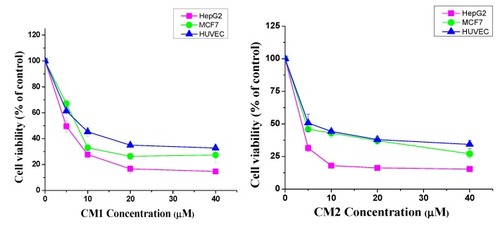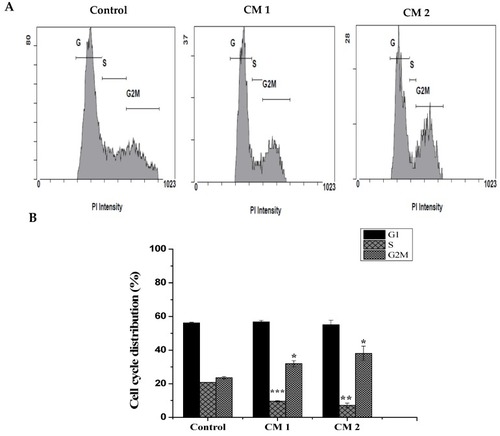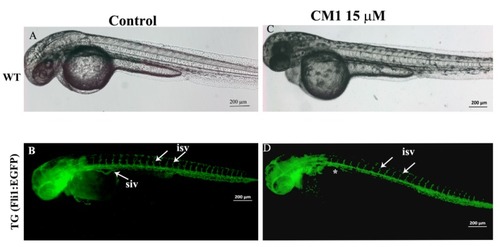- Title
-
Cytotoxic Evaluation and Anti-Angiogenic Effects of Two Furano-Sesquiterpenoids from Commiphora myrrh Resin
- Authors
- S Alqahtani, A., Nasr, F.A., Noman, O.M., Farooq, M., Alhawassi, T., Qamar, W., El-Gamal, A.
- Source
- Full text @ Molecules
|
Chemical structures of 2-methoxyfuranodiene (left) and 2-acetoxyfuranodiene (right) isolated from the chloroform fraction of |
|
Cytotoxic effects of compounds CM1 and CM2 on different human cell lines. The viability was measured by an MTT assay. Cells were cultured as described in the methods and treated with various concentrations of CM1 and CM2 (1–40 µM) for 48 h. The Student’s t-test was used to calculate the statistical differences. The data are presented as the mean ± S.D. (* |
|
Compounds CM1 and CM2 induced cell cycle arrest. HepG2 cells were exposed to the IC50 for 48 h and analysis was determined as described. ( |
|
HepG2 cell death after treatment with compounds CM1 and CM2. Cells were exposed to the IC50 for 48 h, and cells undergoing either apoptosis or necrosis were assessed using co-staining with Annexin-V/FITC-PI dyes. ( |
|
2-methoxyfuranodiene inhibited the secondary angiogenic blood vessel formation in zebrafish embryos. ( |
|
2-acetoxyfuranodiene decreased the formation of angiogenic blood vessels during zebrafish embryonic development. ( |






